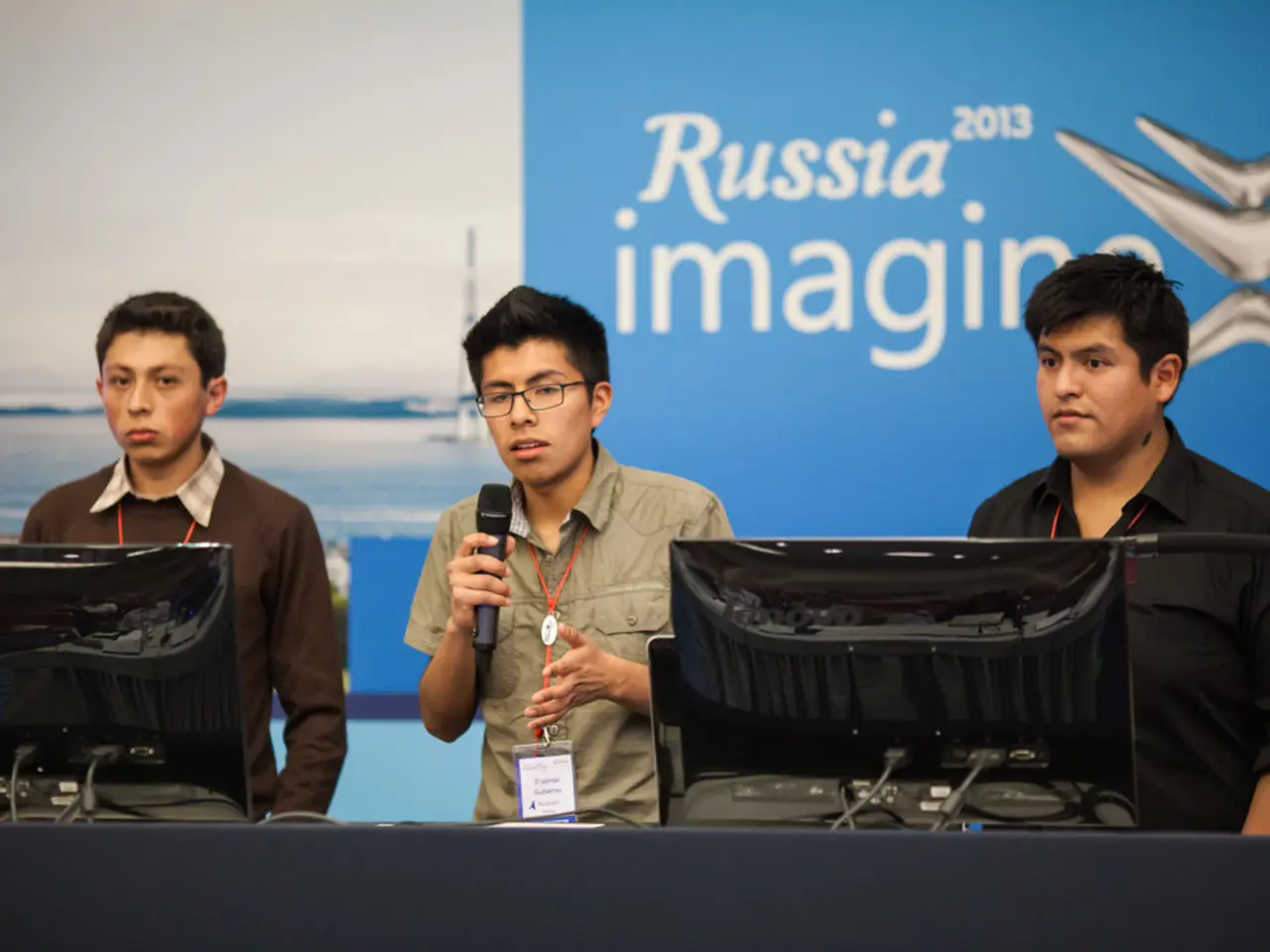Geopolitical Influences Shaping the Landscape of Cybersecurity
In the rapidly evolving digital era, geopolitical tensions have significantly amplified cyber threats globally, making the cybersecurity landscape more complex and dangerous for multinational companies. State-backed hacking activities, focused on espionage, critical infrastructure sabotage, and intellectual property theft, have surged dramatically, with some industries experiencing a 300% rise in targeted attacks [1][2][3][5].
The U.S., China, Russia, and India are among the powerful countries targeted more frequently by these cybersecurity threats. To counteract these risks, various government agencies, such as the U.S. Cybersecurity and Infrastructure Security Agency (CISA), work tirelessly to educate organizations about cybersecurity threats and recommend a proactive approach to protect against cyber risks [2].
Multinational companies, particularly those with international stakeholders, face heightened risks from politically motivated cyberattacks. These attacks can take various forms, including ransomware, attacks on operational technologies, and exposure via complex global supply chains. To protect themselves, companies should adopt several key strategies [2]:
1. **Proactive Exposure Management:** Continuously identify, monitor, and remediate potential vulnerabilities across all systems, with real-time operational integration. 2. **Invest in Cyber Resilience Technologies:** Embrace evolving security technologies, including AI-based threat detection, blockchain, and quantum-resistant cryptography, to keep pace with the threat environment. 3. **Strengthen Critical Infrastructure Security:** Prioritize building resilience through layered defenses, redundancy, and rapid incident response capabilities for companies relying on or operating critical infrastructure. 4. **Integrate Geopolitical Risk Intelligence:** Anticipate state-backed threat vectors by incorporating geopolitical trend analysis into cybersecurity strategies, adjusting security postures in response to evolving international tensions and specific regional risks. 5. **Cross-Border Collaboration and Compliance:** Engage with international cybersecurity frameworks and share threat intelligence across jurisdictions to better defend against sophisticated global adversaries leveraging geopolitical conflicts.
The U.S. Department of Defense (DoD) has also taken steps to bolster DoD contractors' cybersecurity programs, introducing the Cybersecurity Maturity Model Certification (CMMC) to increase resilience to cyberattacks [4].
Recent events underscore the importance of these strategies. In January 2022, the U.K. Labour Party confirmed a cyberattack on a third-party company that resulted in compromised member data [6]. In November 2022, a group of Iranian government-sponsored threat actors exploited the Log4Shell vulnerability in an unpatched VMWare server and compromised a U.S. federal agency, breaching their network, installing cryptocurrency mining software, and launching a malware attack to steal sensitive data [7].
Organizations located in or with clients in Ukraine have faced mounting cyber threats, including distributed denial of service (DDoS), increases in malware, targeted, persistent phishing attempts, disinformation campaigns, and even cyber-physical system attacks [8]. The Russia-Ukraine War has posed challenges for the two countries involved, as well as international organizations and large multinational corporations [9].
To reduce the likelihood of experiencing a cyber incident, companies should educate themselves and their executives about these risks and vulnerabilities. This includes prioritizing cybersecurity training for employees, teaching them about practicing good cyber hygiene, identifying potential phishing scams, and understanding the importance of changing passwords and other critical practices.
As the global cybersecurity landscape faces an increase in threats due to the emergence of new technologies and bad actors becoming more sophisticated, companies must focus on protecting themselves from ongoing national and international cybersecurity threats. This requires leveraging cybersecurity tools such as advanced, AI-based solutions, vulnerability management tools, and other security-oriented technologies [10].
In conclusion, geopolitical events have prompted organizations to rethink their cybersecurity strategies, often requiring them to improve their cybersecurity posture. By adopting proactive, intelligence-driven cyber defense strategies and focusing on exposure management, technological modernization, and geopolitical awareness, companies can better protect themselves in this complex and dangerous cybersecurity landscape.
References: [1] https://www.forbes.com/sites/larryalton/2020/10/20/the-impact-of-geopolitics-on-cybersecurity-and-what-it-means-for-businesses/?sh=37045c2a2c86 [2] https://www.cisa.gov/uscert/ncas/alerts/aa22-137a [3] https://www.mckinsey.com/business-functions/risk/our-insights/geopolitical-risk-and-cybersecurity-how-companies-can-prepare-for-a-more-dangerous-world [4] https://www.accenture.com/us-en/insight-cybersecurity-maturity-model-certification-cmmc [5] https://www.mckinsey.com/business-functions/risk/our-insights/cybersecurity-maturity-model-certification-cmmc-what-you-need-to-know [6] https://www.bbc.com/news/uk-politics-59531259 [7] https://www.washingtonpost.com/technology/2022/11/22/iranian-state-actors-exploited-log4shell-vulnerability-compromise-us-agency/ [8] https://www.welivesecurity.com/2022/03/22/cyber-threat-activity-in-ukraine-continues-to-escalate/ [9] https://www.csoonline.com/article/3677876/russia-ukraine-war-cyberattacks-are-the-new-battleground.html [10] https://www.mckinsey.com/business-functions/risk/our-insights/cybersecurity-maturity-model-certification-cmmc-what-you-need-to-know
- In the face of the escalating cybersecurity threats, it's crucial for organizations to invest in cybersecurity training for their employees, educating them about phishing scams, good cyber hygiene, and the importance of information security practices such as changing passwords regularly.
- While adopting proactive cyber defense strategies, companies should pay attention to social engineering tactics like phishing, which adversaries often leverage to gain unauthorized access to sensitive information.
- To keep pace with the growing sophistication of hackers and the expansion of technology in politics and general-news, companies should include encyclopedic knowledge of cybersecurity trends, such as the latest threats and solutions, in their security training programs.
- By advocating for cybersecurity in their respective industries and participating in global cybersecurity initiatives, multinational companies contribute to maintaining an secure and resilient cybersecurity environment, preventing cyber threats such as state-backed hacking activities.
- To ensure the continuity of operations in turbulent geopolitical landscapes, it is essential for organizations to stay alert to evolving threats and adopt a dynamic cybersecurity approach that incorporates cybersecurity training, technology, and ongoing security awareness to minimize the risks of phishing attacks and other cybersecurity threats.




